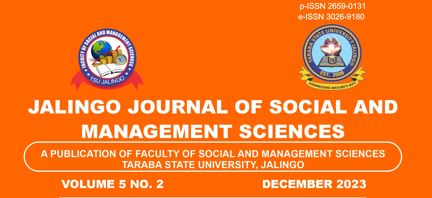Morphometric Analysis of Dadin Kowa Dam Catchment, Gombe State, Nigeria
Keywords:
Dadin Kowa Dam catchment, Geospatial techniques, Gongola basin, morphometric parameters, morphometric analysis, watershedAbstract
Dadin Kowa dam was constructed for multipurpose use. These three main uses are water supply for Gombe Metropolis, Irrigation agriculture and generation of hydroelectricity. Despite its importance, the Dadin Kowa dam’s catchment has not been comprehensively studied as its morphometric characteristics is either lacking or inadequate and therefore, hindering effective planning and conservation efforts as well as effective development of water resource management strategies, potentially compromising the socio-economic and ecological integrity of the catchment. SRTM Digital Elevation Model data of the basin was obtained, while extraction of the basin was delineated using Geographic Information System technique. The morphometric analysis of the basin was categorized into 3 sections: linear, relief, and areal, while the generation of each of the parameters in each category were achieved through the use of ArcGIS software. The study revealed that the basin is an elongated basin with a perimeter of 2,305.92 km and total stream length of 758,647.9 km. Dadin Kowa basin was also found to be an 11th order stream based on the 30m resolution of the SRTM data. The bifurcation ratio of the basin being 6.2 means the basin has a very low risk of getting flooded unless created by other conditions. The Rho value was 0.082 which indicates that very little water is retained in the river channels. The drainage density of the basin was 23.6 km which means the catchment has high drainage density which means it has high runoff and low percolation. The high stream frequency of 190.4 is also indicative of low permeability. The basin with a form factor (Ff) of 0.36 indicates a moderately compact shape. The Dadin Kowa basin has an elongation ratio of 0.6 which was interpreted as having an average relief region. Among other recommendations were that morphometric analysis of river basins are better assessed through the use of geospatial techniques. Moreover, since the basin at its present state has a very low risk of getting flooded, sustainable utilization of the basin and its resources should be put in place in order to extenuate environmental hazards in the area.

Downloads
Published
Issue
Section
License
Copyright (c) 2023 JALINGO JOURNAL OF SOCIAL AND MANAGEMENT SCIENCES

This work is licensed under a Creative Commons Attribution-NonCommercial 4.0 International License.
